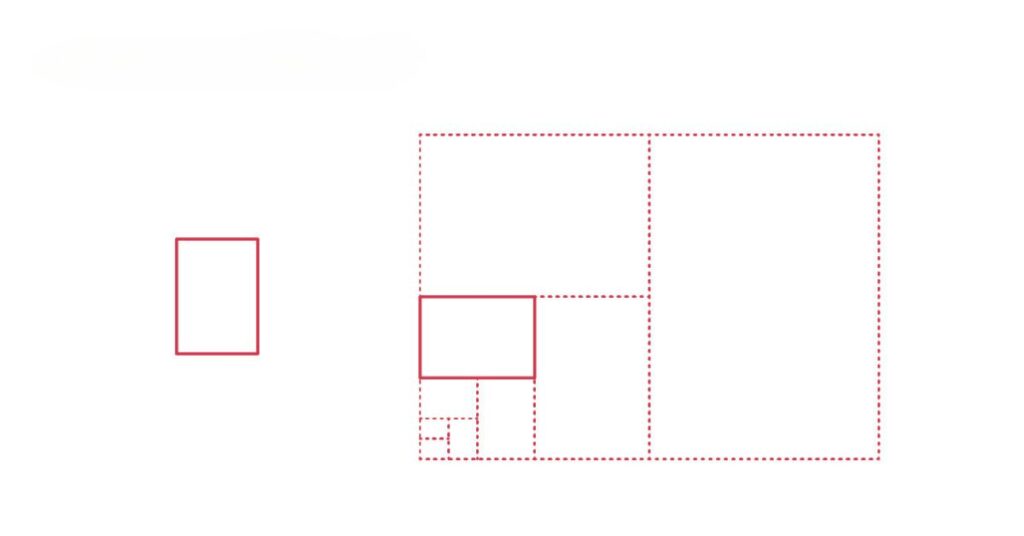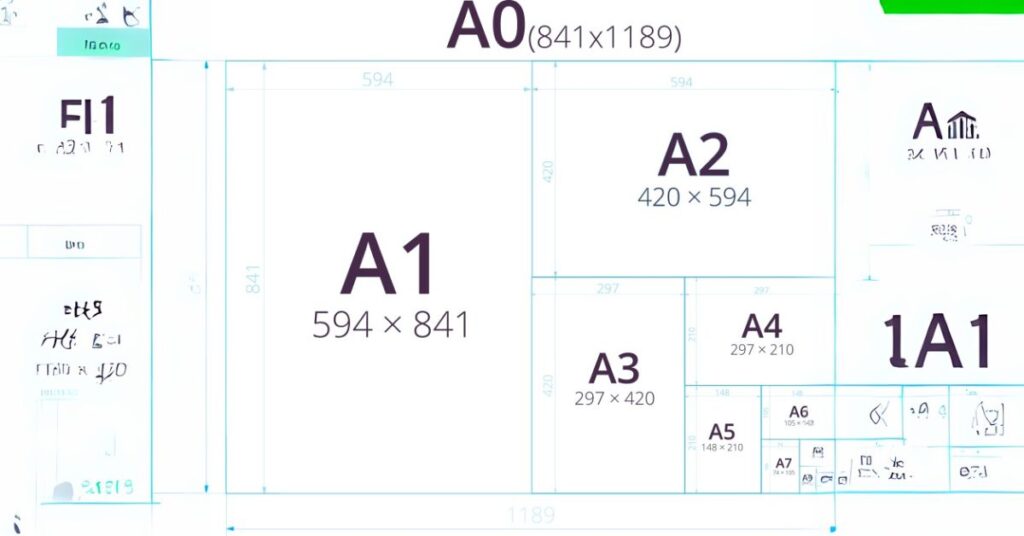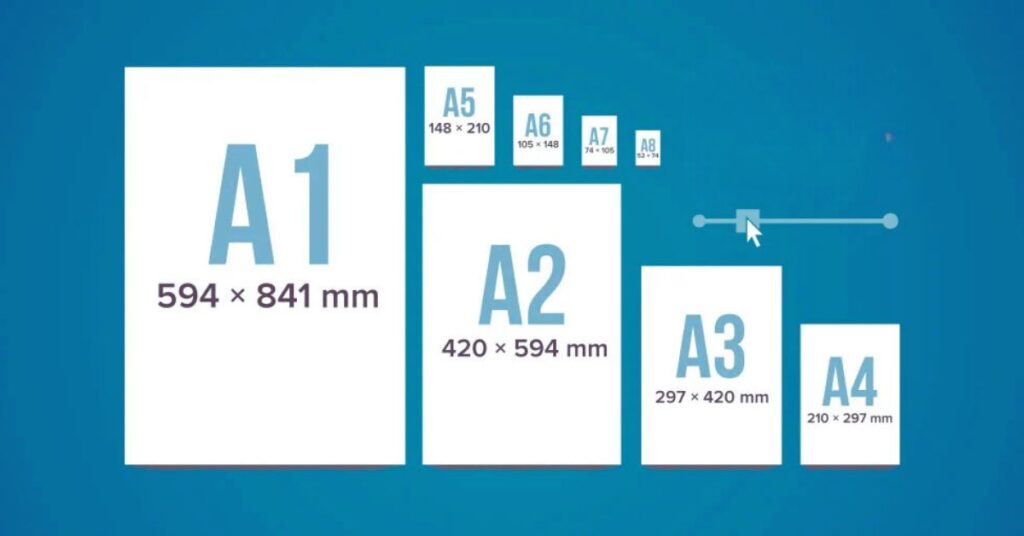Several standard paper size are in use today, but the international ISO standard and the North American standard are the most widely used. Stationery, brochures, digital copies, fliers, and other printed materials are ordered in these sizes. The charts below describe and contrast these sizes and their dimensions.
What is Standard Paper Size?
The worldwide and North American systems are the two primary paper size standards now in use. The size paper most frequently used in the United States and Canada, which utilize the North American system, differs from the international system, also known as the ISO 216 standard, which is accepted worldwide.
The most standard paper sizes in the United States are:
- Letter (8.5 × 11 inches) — The ideal for everyday office print-outs and academic documents
- Legal (8.5 × 14 inches) — Often utilized for contracts and legal documents, hence the name
- Tabloid (11 × 17 inches) — Typically used to make tabloids, newsletters, or smaller-sized newspapers
Who is Paper Dimensions?

The ANSI, or American National Standards Institute, sets the standard paper sizes in the US. ANSI Y14.1 contains all of the standardized letter paper dimensions.
The ISO, or International Organization for Standardization, regulates paper size worldwide. The globally accepted standard for paper sizes is ISO 216.
There are other paper standards, and several nations have institutions in charge of creating standards. However, ANSI and ISO are the two most often used paper size standards globally.
Are there other Standard Paper Series?
Although A-size paper is the most often used worldwide, other sizes are also available. ISO 219 also includes a B-Series and a C-Series. Because of their significantly broader proportions, the B-Series are ideal for posters. The C-Series are frequently used for envelopes since they are slightly wider than the a5 paper size: Envelopes of C-Series dimensions can easily accommodate papers of the A5-Series.
What is the Size of A4 Paper and How Were Standard Paper Sizes Determined?
The typical paper measurements used today are mostly influenced by historical precedent and practical considerations. Developed in 1975, the ISO 216 standard applies to international letterhead size A4, which is 8.25 × 11.75 inches (210 x 297 mm).
However, the conventional Letter (8.5 x 11) size has been used for generations in the United States. But if President Hoover had his way in the early 1930s, we might have ended up with a different standard. He demanded that 8 x 10.5-inch printing be used for all official papers and documents. President Reagan only changed some government documents to the 8.5 x 11 Letter size paper that most other organizations used when he took office in the early 1980s.
It was finally formalized in 1995 with the release of the ANSI/ASME Y14.1 standard by the American National Standards Institute (ANSI). They standardized the usage of 8.5 x 11 paper and other US paper sizes for engineering drawings.
Therefore, the normal copy paper used in the United States differs from A4 paper size. The size difference between the North American standard letterhead and the international standard (A4) is depicted in the image below.
Standard US sizes
The “Letter” size is 8.5 by 11 inches, whereas the comparable A4 size in inches is 8.27 by 11.7 inches. It is difficult to remember because US sizes are based on the imperial system. In the US, standard paper sizes were determined individually rather than according to a standard aspect ratio.
- As previously stated, letter paper size equals A4, and it is used for various purposes at home, including homework, flyers, and correspondence.
- A ledger (landscape) or tabloid (portrait) slightly larger than A3 can be used for tiny posters, menus, and documentation. This site is also occasionally used for printing wills, deeds, and other significant financial documents.
- Legal is three inches longer than the US letter paper size, yet it has the same width. As the name implies, this is typically used for official and legal letters and documents.
It is how ANSI sizes compare to ISO paper sizes. The sizes in color are the ANSI versions, which are slightly different from the A sizes.
Why do Different Countries Use Different Paper Sizes?
You may be wondering why different paper sizes are used in the United States as opposed to other nations like Australia and the United Kingdom. Historical evolution and the increasing standardization of procedures are key to the solution.
The American Standard (ANSI)
The American National Standards Institute (ANSI) developed its paper size guidelines independently of other international standards, which the United States adheres to. The printing technology chose the sizes at the time and the requirements of American companies. The most popular size in this system is letter format, sometimes called ANSI A size.
Because this system uses imperial measurements (inches), the dimensions of US paper sizes are frequently stated in inches.
North America
| SIZE | WIDTH (in.) | HEIGHT (in.) | WIDTH (mm) | HEIGHT (mm) |
| Business Card | 3.5 in. | 2 in. | 85.6 mm | 53.98 mm |
| Executive | 7.5 in. | 10 in. | 190.5 mm | 254 mm |
| Jr. Legal | 8 in. | 5 in. | 203.2 mm | 127 mm |
| Letter/ANSI A | 8.5 in. | 11 in. | 215.9 mm | 279.4 mm |
| Legal | 8.5 in. | 14 in. | 215.9 mm | 355.6 mm |
| Ledger/Tabloid/ANSI B | 11 in. | 17 in. | 279.4 mm | 431.8 mm |
| ANSI C | 17 in. | 22 in. | 432 mm | 559 mm |
| ANSI D | 22 in. | 34 in. | 559 mm | 864 mm |
| ANSI E | 34 in. | 44 in. | 864 mm | 1118 mm |
| Arch A | 9 in. | 12 in. | 229 mm | 305 mm |
| Arch B | 12 in. | 18 in. | 305 mm | 457 mm |
| Arch C | 18 in. | 24 in. | 457 mm | 610 mm |
| Arch D | 24 in. | 36 in. | 610 mm | 914 mm |
| Arch E | 36 in. | 48 in. | 1914 mm | 1219 mm |
| Arch E1 | 30 in. | 42 in. | 762 mm | 1067 mm |
| Arch E2 | 26 in. | 38 in. | 660 mm | 965 mm |
| Arch E3 | 27 in. | 39 in. | 686 mm | 991 mm |
The International Standard (ISO)
The International Organization for Standardization (ISO) 216 standard was created in 1975 and is used by most people worldwide. This approach makes resizing and scaling more efficient because it is based on the A-series paper sizes, which are determined by a mathematical ratio. These papers also called the A-class, come in sizes A0 through A10, with A10 being the smallest. It indicates that A4 paper, the most popular A-class size, is half the size of A3 paper.
Furthermore, ISO standards include B-series paper sizes—B4, B5, and B6—utilized for books, posters, and envelopes, providing greater design and printing freedom.
The ISO system’s sizes are more standardized and scalable worldwide since they are measured in metric units (millimeters).
ISO Metric Paper Sizes
| SIZE | WIDTH (mm) | HEIGHT (mm) | WIDTH (in.) | HEIGHT (in.) |
| Int’l Business Card | 85.6 mm | 53.98 mm | 3.37 in. | 2.125 in. |
| Japanese Business Card | 91 mm | 55 mm | 3.583 in. | 2.165 in. |
| Hungarian Business Card | 90 mm | 50 mm | 3.543 in. | 1.969 in. |
| A0 | 841 mm | 1,189 mm | 33.11 in. | 46.81 in. |
| A1 | 594 mm | 841 mm | 23.39 in. | 33.11 in. |
| A2 | 420 mm | 594 mm | 16.54 in. | 23.39 in. |
| A3 | 297 mm | 420 mm | 11.69 in. | 16.54 in. |
| A4 | 210 mm | 297 mm | 8.27 in. | 11.69 in. |
| A5 | 148 mm | 210 mm | 5.83 in. | 8.27 in. |
| A6 | 105 mm | 148 mm | 4.13 in. | 5.83 in. |
| A7 | 74 mm | 105 mm | 2.91 in. | 4.13 in. |
| B0 | 1,028 mm | 1,456 mm | 40.48 in. | 57.32 in. |
| B1 | 707 mm | 1,000 mm | 28.66 in. | 40.48 in. |
| B2 | 514 mm | 728 mm | 20.24 in. | 28.66 in. |
| B3 | 364 mm | 514 mm | 14.33 in. | 20.24 in. |
| B4 | 257 mm | 364 mm | 10.12 in. | 14.33 in. |
| B5 | 182 mm | 257 mm | 7.17 in. | 10.12 in. |
| B6 | 128 mm | 182 mm | 5.04 in. | 7.17 in. |
What Are the Implications of this Difference?
Despite the close similarities between the ISO and ANSI standards, there are a few considerations to make while switching between them:
- Printing Compatibility: When printed on A4 paper, documents made on letter-sized paper might not fit precisely, which could cause formatting problems.
- Business Communication: Understanding the distinctions between these standards is essential, particularly if you conduct business internationally. Doing this lets you ensure that your documents are appropriate for recipients overseas and are formatted professionally.
Why Is Understanding Paper Sizes Important?

Anyone who appreciates the polished appearance of their documents and photos must be aware of printer paper sizes. Knowing the right size guarantees that your documents will print easily and appear as intended wherever they are sent.
Not having the right paper size corresponding to the document you wish to print is a regular problem. For instance, you won’t be able to print a digital document that is tabloid size if your printer is set to letter size. Therefore, before printing, double-check and make the necessary adjustments to the size of your digital document.
High-Quality Prints
Using the incorrect size can result in misplaced text, cut-off visuals, and a subpar presentation. Your printed items will appear crisp, tidy, and professional if the paper is the right size.
Additionally, since different types of paper can impact the quality of your prints, it is equally crucial to understand them. Visit our blog on printing paper types for additional details.
Printer Health and Longevity
Using the wrong paper size might result in paper jams, printer failures, and even internal printer component damage. However, using the right sizes guarantees a longer printer lifespan and seamless functioning.
Consistency and Professionalism
Knowing and utilizing the appropriate paper sizes when working with clients from abroad guarantees that your documents are formatted appropriately and professionally. This attention to detail facilitates maintaining a consistent and professional image, which benefits your company.
Knowing paper sizes gives you more control over the quality of your documents. Controlling your printing environment is also crucial.
To help offices cut waste and paper expenses, STPT provides managed print services (MPS). Knowing how much paper you use is one step to a more economical and environmentally friendly printing setup. To find out more about our MPS, click the image below. Please reach us if you need assistance selecting the appropriate paper size for your printer.

